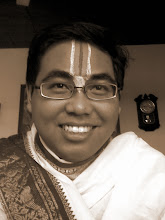
Om suryatidam nirmalam satatam| candramrtvat sakalam| sa sadasiva sa suryam idapyam jagatvam| brahma surya surya prabhavam| mahesvaram mahadevam sambhu sankaras ca sivam sadasivam paramasivam| tava suksmam paramgataya tava sa surya| padmanabha narayana indram suryaprakasam| catur-bhumim asamam asisam krstam sukham sajanam| sthavarajangamam lata vrksa sapraroham mrga prajadhipati| om sivam sarva sakala maranam| nada vindvam bhaskaram omkaram ekaksaram| kalagnika-suryam tryaksara angam panca brahmanam dvyaksaram| narayanaskanda ganapati kumarastri siva surya sa etad atharvaveda sirodhite.

Note: This Sirah describing the truths of mystical meditation with Sun as the object, representing Sriman Narayana, The Spiritual Supreme Sun. In one sense, I saw this Sirah as expansion of Brahma-gayatri. I am recommending you to read Srimad Pejavar Swamiji’s (H.H. Sri Vishwesa Tirtha Sripadangalavaru) commentary on Gayatri-mantra and Gayatri-mahima-madhuri of Srimad Mahanidhi Swamiji, for better understanding about this Narayana-Sun concept. This Sirah also has Tantric colour. Mantra meditation takes elaborately by Tantra-sastra. The Balinese Vaishnavism and Saivism focused on older form of Tantric worship. They don’t stress primarily on Deity worships such in common Vaishnava-agama-sastra (Pancaratra or Vaikhanasa), or Saiva-agama-sastra. They have combine form of Tantra path and Vedic path of elaborate sacrificial ritual. For daily worship, they don’t use installed Deities or even salagramam as an object of devotion and meditation, but it was the Sun. They saw their beloved Deity in the sun. Then they invoked the same Deity into Kumbha or Kalasha. The Balinese today have no Deity worship, but they still maintain this Kumbha-puja. Some centuries ago, all the sects of Panchopasana-devata (Surya, Devi, Ganapati, Siva, Vishnu, and also Skanda) was exist in Bali, but after the disappearance of other not so popular sects, these forms of worship only perform by both minor Vaishnavites and Saivites Brahmins who built the majority and was believed has absorbed all kind of other devata’s worships into its fold. This kind of Tantric worship, made Balinese have their own agama, centred on Sun. So for the spiritual need of laymen, a fifteenth century famous Saiva High Priest from Java, called Dvijendra, came to Bali after the fall of Bilvatikta by Islamic forces, and organized the installation of Padmasana Collumn, The Lotus Throne of The Sun, in Balinese temples. This kind of worship also has resemblance with Khamba- worships in Orissa or Pillar-like form of Lord Sudarshana in Puri Jagannath. May be all these practises in Bali were based on the authority of our Atharvaveda Sirah.
Another things that take my concern is the case of aksaras that interpreted differently by me and some other friends. Unfortunately in













No comments:
Post a Comment